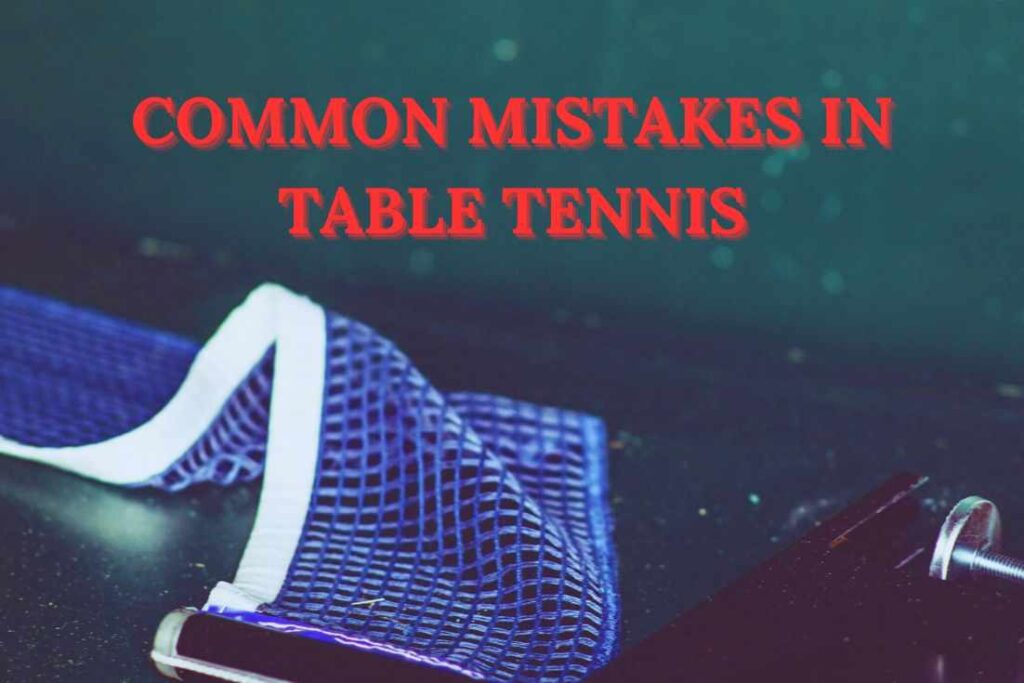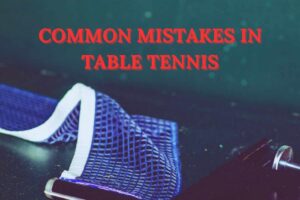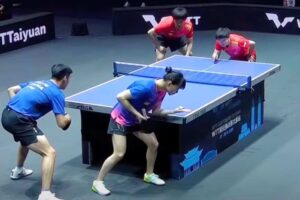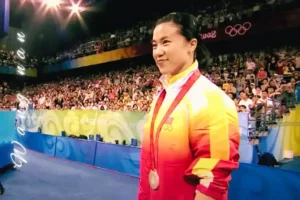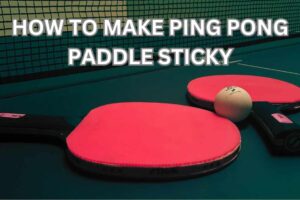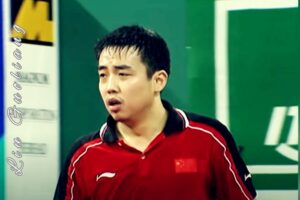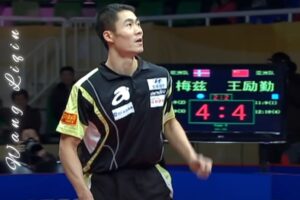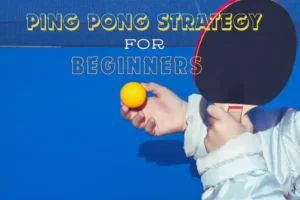Are you looking to avoid the top common mistakes in table tennis? You’re not alone. Whether you’re a casual player enjoying a friendly match with friends or a serious competitor honing your skills, making mistakes is an inevitable part of the game. But what if you could identify and correct those mistakes to take your table tennis game to the next level?
In this comprehensive guide, we’ll dive deep into the world of table tennis and uncover the most common mistakes in table tennis that players make, regardless of their skill level. From technique blunders that affect your spin to strategic errors that can cost you crucial points, we’ll explore it all. So, if you’re eager to improve your table tennis skills and become a stronger player, join us as we explore the intricacies of this thrilling sport and provide you with valuable tips and strategies.
Common Mistakes in table tennis at a glance:
- Grip and Stance Errors in Table Tennis
- Addressing Inadequate Footwork in Table Tennis
- Lack of Spin Control in Table Tennis
- The Pitfall of Overreliance on Power
- Ignoring Defensive Skills
- Overlooking Mental Preparation
- The Neglected Serve and Return Aspect
- Poor Game Strategy to Avoid Common Errors
- A Common Pitfall in Table Tennis
- Not analyzing games enough
- Not warming up and stretching
If you want to sharpen your skills, explore details regarding common mistakes.
Also See: Touch the Table in Table Tennis: Key Rules and Penalties.
Grip and Stance Errors in Table Tennis
Mastering grip and stance is crucial for your table tennis technique. It greatly affects your performance. This explores common mistakes in table tennis and offers tips for the correct grip and stance.
Common Grip and Stance Mistakes:
- Gripping the paddle too tightly or too loosely can hinder your control and power. Finding the perfect balance is key.
- A stance that’s too narrow can limit your mobility and make it challenging to reach wide shots.
- Keeping both feet parallel to the table instead of using an open stance can limit your range of motion.
Tips for Correct Grip and Stance:
- Adopt the “shakehand” grip as it offers better control and versatility.
- Maintain a balanced, slightly open stance with your weight on the balls of your feet.
- Hold the paddle with a relaxed grip, allowing for quick adjustments during rallies.
- Work on your footwork to ensure you’re always in the best position to make effective shots.
By addressing these grip and stance errors and following our tips, you’ll find yourself better equipped to excel in table tennis and enhance your overall game.
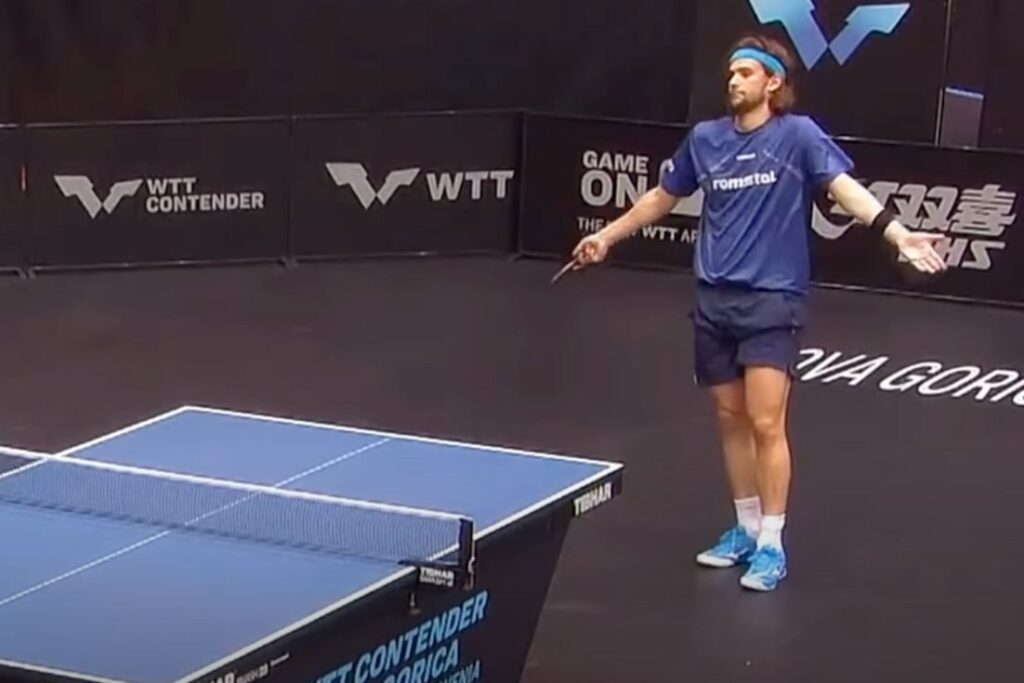
Addressing Inadequate Footwork in Table Tennis
In table tennis, footwork is crucial. We’ll address common footwork mistakes and share drills to improve your skills.
Common Footwork Mistakes:
- Many players tend to stay stationary, making it challenging to reach wide shots or respond to fast-paced rallies effectively.
- Crossing your feet can disrupt your balance and slow down your reaction time.
- Not pivoting properly can result in awkward positioning, making it difficult to execute powerful shots.
Drills and Exercises to Improve Footwork Skills:
- Practice side-to-side shuffling to enhance your ability to cover the entire table quickly.
- Set up markers in a figure-eight pattern and move through them to improve agility and foot coordination.
- Mimic various game situations without a ball to fine-tune your footwork and positioning.
- Partner with someone and mirror their movements, focusing on quick adjustments and positioning.
In conclusion, refining your footwork accelerates your progress, ensuring you’re always in the right position to hit the ball effectively.
Lack of Spin Control in Table Tennis
Controlling spin is an art in table tennis that beginners often overlook, but it’s the key to manipulating the ball’s path, making forehand and backhand hits more effective close to the table. This article addresses common spin control mistakes in table tennis and offers guidance for mastering spin techniques.
Common Mistakes Related to Spin Control:
- Players often struggle to apply the right amount of spin, resulting in shots that lack precision and depth.
- Using the same spin repeatedly can make your shots easy to read and counter by opponents.
- Failing to adjust the racket angle correctly can lead to unintentional spins or the complete absence of spin.
Guidance on Developing Better Spin Techniques:
- Experiment with different types of spins, such as topspin, backspin, and sidespin, to keep your opponents guessing.
- Mastering wrist movement is crucial for controlling spin. Practice varying your wrist’s angle and speed.
- Pay attention to your opponent’s spin and learn to read their cues to anticipate the ball’s behavior.
- Incorporate spin-specific drills into your training regimen to refine your spin control skills.
Developing spin control is essential for maintaining control over the ball, enhancing grip, and achieving the right acceleration during shots.
The Pitfall of Overreliance on Power
In table tennis, power shots are captivating but overusing them leads to suboptimal outcomes. This article addresses this mistake and offers strategies for a balanced game with power and precision.
Mistake Identification:
- Trying to overpower opponents can result in unforced errors and balls sailing beyond the table.
- Focusing solely on power may compromise your ability to place the ball strategically, leaving you vulnerable to counterattacks.
Strategies for Achieving a Balanced Game:
- Develop the ability to place shots precisely, targeting your opponent’s weak spots rather than relying solely on brute force.
- Combine power with control by practicing controlled, well-timed power shots that catch your opponent off guard.
- Incorporate spins and variations in your shots to disrupt your opponent’s rhythm, making them less reliant on power.
- Make conscious decisions about when to use power and when to opt for finesse based on your opponent’s playing style and weaknesses.
By recognizing the pitfalls of over-relying on power and embracing a balanced approach, you can elevate your table tennis game to a higher level, becoming a more versatile and formidable player on the table.
Common Oversight: Ignoring Defensive Skills
Despite focusing on offense, table tennis players often overlook defense. This resource highlights common defensive skill mistakes and offers valuable exercises and tips for improvement.
Mistakes to Avoid:
- Focusing solely on offensive techniques can leave you ill-equipped to handle opponents who excel at aggressive play.
- Insufficient practice in blocking can result in inconsistent returns and an inability to withstand relentless attacks.
Defensive Training Exercises and Tips:
- Dedicate time to blocking drills to hone your ability to return powerful shots with control and precision.
- Improve your agility and positioning through footwork exercises, enabling you to reach difficult balls more effectively.
- Learn to mix defensive shots, such as chops, lobs, and pushes, to keep opponents guessing and disrupt their rhythm.
- Develop the ability to read your opponent’s shots and anticipate their intentions, allowing you to react proactively.
Mastering defensive techniques is the key to staying competitive in table tennis, allowing players to hold the racket confidently and handle intense rallies.
Common Mistake: Overlooking Mental Preparation
Physical skills are vital to play table tennis, but mental preparation is often overlooked. This article delves into common mental errors by players and introduces techniques for harnessing your mental strength.
Common Mental Mistakes:
- Allowing distractions to disrupt your concentration during matches can lead to crucial errors.
- Self-doubt and negative self-talk can undermine your confidence and performance on the table.
- Rushing shots and strategies without careful consideration can lead to poor decision-making.
Mental Training Techniques:
- Practice mental imagery to visualize successful plays and stay focused on your game plan.
- Incorporate mindfulness exercises to improve concentration and stay in the present moment.
- Replace negative self-talk with positive affirmations to boost confidence and self-belief.
- Use controlled breathing exercises to manage anxiety and maintain composure under pressure.
Recognize and correct these mental errors. Use mental training to boost mental strength and enhance performance. Your mind is a powerful tool in table tennis. Mastering it is key to success.
The Neglected Serve and Return Aspect
Explore common errors in table tennis serving and returning, and find strategic advice and training to excel in this essential aspect of the sport.
Common Errors in Serving and Returning:
- Repeatedly using the same serves can make you easily readable and vulnerable to your opponent’s attacks.
- Failing to anticipate and adapt to your opponent’s serves can lead to missed opportunities and defensive play.
Tactical Insights and Practice Routines:
- Incorporate spins, speeds, and placements into your serves to keep your opponent guessing and set the tone of the rally.
- Develop the ability to place your serves precisely on the table, exploiting your opponent’s weaknesses.
- Practice returning various types of serves, focusing on positioning and shot selection.
- Master the art of serving to set up your offensive opportunities, allowing you to take control of the rally.
Identify and rectify errors while honing tactical insights and practice to become a versatile and strategic table tennis player. Master effective serve and return strategies to outsmart opponents, essential for match control.
Poor Game Strategy to Avoid Common Errors
In table tennis, a solid game strategy can make or break your chances of winning. This content delves into typical strategic errors players commit and offers valuable advice on creating and implementing successful game plans.
Common Strategic Mistakes:
- Sticking rigidly to one strategy can render you vulnerable to opponents who adjust their play.
- Failing to exploit your opponent’s vulnerabilities can result in missed opportunities.
- Neglecting to consider the score, your opponent’s playing style, and table conditions can lead to poor decision-making.
Guidance on Developing Effective Game Plans:
- Prioritize understanding your opponent’s strengths and weaknesses before the match.
- Be prepared to adjust your tactics based on your opponent’s play and the evolving game situation.
- Strategically target your opponent’s weaknesses, forcing them out of their comfort zone.
- Maintain composure during high-pressure moments, sticking to your game plan.
Recognize and correct common strategic errors to enhance your table tennis strategy and succeed on the table. A well-thought-out game plan is a potent tool in your table tennis arsenal.
Equipment Changes: A Common Pitfall in Table Tennis
Table tennis players often fall into the trap of constantly changing their equipment, believing it will lead to instant improvement. However, this article sheds light on the drawbacks of this practice.
Frequent equipment changes disrupt your muscle memory and hinder consistency in your game. Each new racket or rubber requires adjustment time, slowing your progress and leaving you less focused on skill development.
While equipment upgrades can benefit advanced players, it’s crucial to find a balance. Stick with a setup long enough to master its nuances before considering changes. Remember, expertise comes from honing your skills, not just from the latest gear.
Poor Technique: Not analyzing games enough
Many table tennis enthusiasts neglect the invaluable practice of game analysis. This article emphasizes the significance of post-match reflection.
Failing to analyze matches means missing out on opportunities for improvement. You can’t address weaknesses or refine strategies without a clear understanding of your performance.
Regular game analysis helps identify recurring mistakes, areas for improvement, and effective strategies. It sharpens your skills, enhances decision-making, and fosters a deeper understanding of your opponent’s tactics. In essence, it’s the key to continuous progress in the world of table tennis. Dedicate time to review and learn from your matches; it’s the pathway to becoming a better player.
Not warming up and stretching
In the rush to jump into a game of table tennis, players often skip the crucial steps of warming up and stretching. This article highlights the significance of these pre-game rituals.
Neglecting warm-up and stretching can lead to injuries, reduced flexibility, and subpar performance. Your body needs preparation to perform at its best.
A proper warm-up increases blood flow, primes muscles, and enhances reaction time. Stretching improves flexibility, preventing strain and promoting agility. Both are essential for a successful and injury-free game. Dedicate time to these routines, and you’ll find yourself more agile, responsive, and ready to dominate the table tennis table.
In closing
In the world of table tennis, “Mistakes in Table Tennis” are not merely setbacks; they are stepping stones to greatness. By acknowledging these common blunders and taking deliberate steps to rectify them, you embark on a journey of improvement and excellence.
Remember, even the most accomplished players were once plagued by these very mistakes. It’s through perseverance, self-awareness, and a commitment to learning that they forge their path to success.
So, embrace these mistakes in table tennis as opportunities for growth. With each error corrected, you inch closer to becoming a more skilled, confident, and formidable table tennis player. Your journey towards mastery begins with the acknowledgment of your mistakes and the determination to overcome them.
